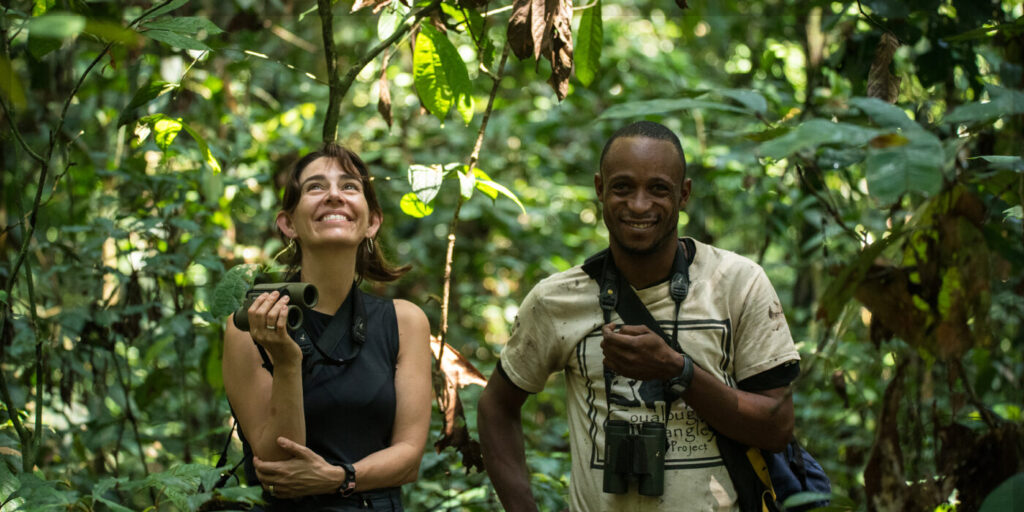Anthropologist Crickette Sanz has made an international reputation studying primate societies, relying on her own social networks to help her achieve work/life balance
Every day, anthropologist Crickette Sanz gets a text message or two from a 100-square mile forest preserve National Geographic once called, “The Last Place on Earth.”
The daily contact with the Goualougo Triangle Ape Project, located in a remote preserve in the Republic of Congo in Central Africa, helps Sanz and her team keep track of chimpanzees and western lowland gorillas, who live and interact virtually uninhibited halfway around the world from the Danforth Campus.
“There’s usually a point of contact every morning, about 1:30 or 2:30 a.m.,” says Sanz, professor of biological anthropology in Arts & Sciences at Washington University in St. Louis, and co-principal investigator of the project along with her husband, David Morgan. “Typically, we get messages from the field teams to let us know how things are going.
“Just the other day, the research assistants recorded this phenomenal observation of gorillas approaching a tree and wanting to play with the chimpanzees, and a chimpanzee kind of made a swipe at the gorilla,” she says. “The team sends these types of updates all the time, because they know we really want to hear these things.”
Just another start to the day for an anthropologist, one who recently received one of the highest honors an academic researcher can get, fellowship in the American Association for the Advancement of Science (AAAS), the world’s largest general scientific society. But in addition to monitoring field progress halfway around the world, she’s balancing academic teaching and research with carpools, school lunches and snow days as a wife and mom to two boys, Skye, age 8, and Myles, 4.
